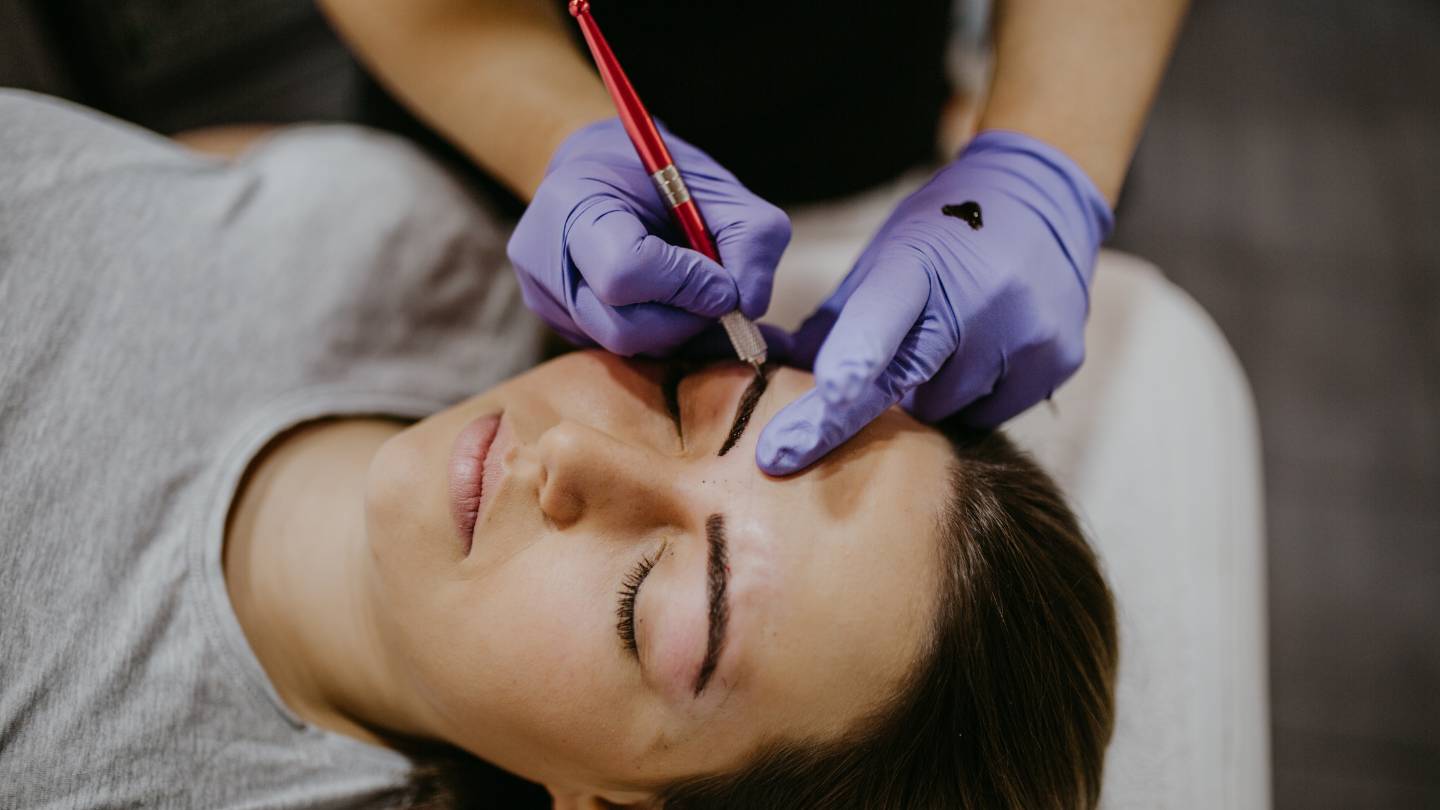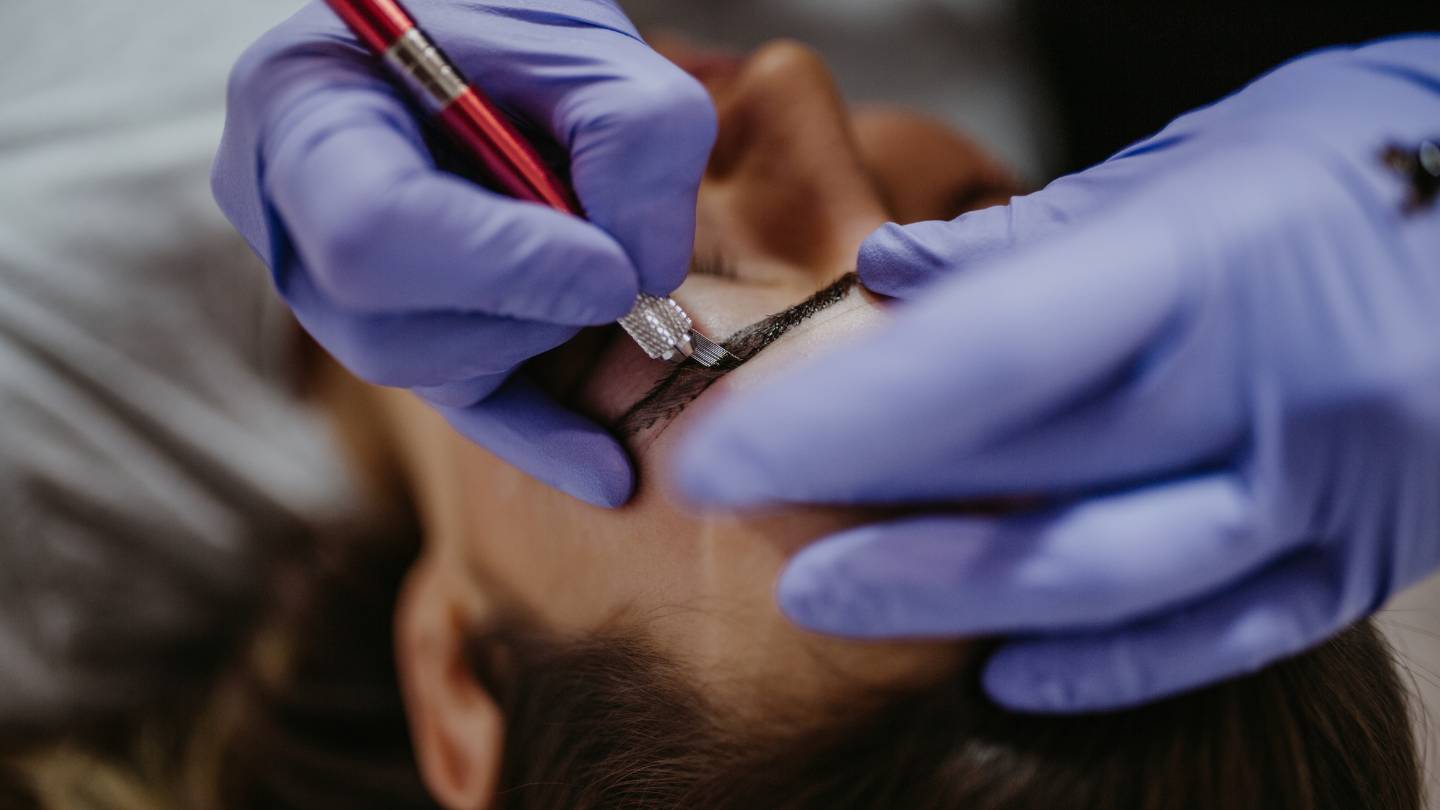Microblading is a popular semi-permanent cosmetic procedure designed to enhance the appearance of eyebrows, particularly for individuals with sparse or uneven brows. By creating precise, hair-like strokes, microblading delivers natural-looking results that last up to 18 months.
However, like any cosmetic treatment, it has both advantages and disadvantages. This article will break down the pros and cons of microblading so you can make an informed decision.
Let’s get straight to the point
Microblading is a semi-permanent eyebrow enhancement technique that delivers natural-looking, fuller brows through fine, hair-like strokes. It provides quick results, saves time on daily makeup, and lasts up to 18 months with touch-ups.
The procedure is safe and works for all skin types, though it may fade faster on oily skin. However, there are risks, including infection, allergic reactions, scarring, and unsatisfactory results.
Proper aftercare and choosing an experienced technician are crucial. While microblading is a convenient option, it requires ongoing maintenance and could be better for some.
Pros Of Microblading
1. Immediate Results
Microblading delivers quick, noticeable results. Once the procedure is complete, you will see a significant improvement in the shape and fullness of your eyebrows.
While the initial result may appear darker, the pigment lightens as the skin heals, revealing a more natural appearance.
2. Time-Saving
One of the biggest advantages of microblading is the time it saves in daily grooming routines. You won’t need to fill in your eyebrows with pencils or powders, reducing the time spent on your makeup routine each morning.
Over time, this also reduces the need to purchase eyebrow cosmetics.
3. Non-Invasive Procedure
Unlike traditional eyebrow tattooing, microblading is a non-invasive process. The procedure is typically painless due to numbing cream, and most clients report minimal discomfort during the session.
The recovery process is generally smooth and requires minimal downtime.
4. Long-lasting Results
Microblading offers results lasting up to 18 months, depending on skin type, lifestyle, and aftercare factors. To maintain the look, regular touch-ups are recommended every 12-18 months.
This longevity makes microblading a cost-effective solution compared to daily eyebrow makeup application.
5. Natural-Looking Brows
When done by a skilled technician, microblading creates natural-looking eyebrows virtually indistinguishable from real eyebrow hair. The fine strokes follow the natural direction of hair growth, ensuring the results enhance your overall appearance without looking artificial.
6. Suitable For Various Skin Types
Microblading can be performed on all skin types, making it a versatile option for many clients. Whether you have dry, normal, or oily skin, a qualified specialist can adjust the technique to ensure optimal results.
7. Boosts Confidence
For individuals who have lost eyebrow hair due to conditions like alopecia or chemotherapy or those with sparse or uneven eyebrows, microblading can offer a significant confidence boost. It can also cover scars or create symmetry in the brow shape.
Cons Of Microblading
1. Allergic Reactions
Although rare, some people may experience allergic reactions to the pigment used in microblading. Conducting a patch test before the procedure to determine whether you’re allergic to the ink is essential. Symptoms of an allergic reaction include itching, redness, and swelling.
2. Risk Of Infection
Any procedure that punctures the skin always carries a risk of infection. If proper hygiene and sterilisation practices are not followed, bacteria or viruses like staphylococcus or herpes can be introduced during the procedure.
Choosing a technician who adheres to strict sanitation protocols to minimise this risk.
3. Unwanted Results
Poorly done microblading can result in uneven, overly thick, or unnatural-looking eyebrows. Although the results are semi-permanent, they can last for months, making it important to select an experienced and qualified technician.
Removing or correcting microblading requires laser treatments, which can be painful and expensive.
4. Keloid Scarring
In rare cases, microblading can lead to keloid scars—raised scars that occur when the body produces too much collagen in response to skin injury. People prone to keloids should avoid microblading, as the process involves making small cuts in the skin.
5. Granulomas
Some individuals may develop granulomas, small lumps that form under the skin in response to the pigment. These lumps are caused by the immune system reacting to the foreign material.
They can take months or even years to develop, and treatment usually involves using corticosteroids or antibiotics.
6. Fading And Maintenance
While microblading results are long-lasting, they are not permanent. The pigment fades over time, especially in people with oily skin.
To maintain the desired look, you’ll need to schedule touch-ups every 12 to 18 months, which can add to the cost over the years.
7. Not Ideal For Oily Skin
Microblading may only last a short time for individuals with oily skin, and the results may need to be more defined. Oily skin can cause the pigment to blur, reducing the sharpness of the hair-like strokes.
Some people with oily skin prefer alternative techniques such as microshading, which applies pigment in dots rather than strokes for a more natural look.
8. Complicated Aftercare
Aftercare for microblading can be challenging. To ensure optimal healing and results, you must follow strict post-procedure care, including avoiding water, makeup, and excessive sweating for several days.
Failure to follow aftercare instructions can result in fading, scarring, or infection.
9. Pain During Procedure
While numbing cream minimises discomfort, some people still find the procedure slightly painful. Pain tolerance varies from person to person, and those with sensitive skin may find the experience uncomfortable.
10. MRI Reactions
In rare instances, individuals who have undergone microblading may experience a reaction during an MRI scan. The pigments in the skin can cause swelling or irritation when exposed to the strong magnetic fields used in imaging.
Before an MRI, it is important to inform medical professionals about tattoos or microblading.
Who Should Avoid Microblading?
Microblading may only be suitable for some. You should consult a doctor before considering the procedure if you have certain medical conditions.
People with the following conditions should avoid microblading:
- Keloid-prone skin
- Skin conditions such as eczema or psoriasis in the brow area
- Blood clotting disorders
- Diabetes (without proper medical approval)
- Those undergoing chemotherapy
Microblading Vs. Other Brow Techniques
Microblading is often compared to other eyebrow-enhancing procedures, such as microshading, powder brows, and traditional tattooing. Each method has pros and cons; your choice will depend on your skin type, desired look, and commitment level.
- Microshading: Suitable for oily skin types, microshading creates a softer, powdered look using dots instead of strokes.
- Powder Brows: This method is ideal for those seeking a fuller, more defined brow with a soft makeup look. It lasts longer than microblading but can appear less natural.
- Tattooing: Traditional eyebrow tattoos are permanent but often look less natural due to their solid, filled-in appearance.
Conclusion
Microblading offers a semi-permanent solution for individuals looking to enhance their eyebrows without daily maintenance. It provides natural-looking, long-lasting results and can save time and money in the long run.
However, it’s essential to weigh the pros and cons carefully. While the benefits, such as time-saving, improved appearance, and long-lasting results, are significant, there are risks, including infection, allergic reactions, and unsatisfactory outcomes.
Choosing a qualified and experienced technician is crucial to achieving the best results. Also, if you have oily skin, keloid scarring tendencies, or certain medical conditions, microblading may not be the best option.
By carefully considering these factors, you can decide whether microblading suits you.
FAQs About Eyebrow Microblading
What Is Microblading And How Does It Differ From Traditional Eyebrow Tattooing?
Microblading is a semi-permanent cosmetic tattooing technique used to enhance the appearance of eyebrows. Unlike traditional eyebrow tattooing, which uses a machine and needles, microblading uses a manual handheld tool to deposit pigment into the skin, creating hair-like strokes that mimic natural eyebrow hairs. The result is a more natural and realistic-looking eyebrow.
What Are The Advantages Of Getting Microblading Done?
- Natural Appearance: Microblading creates natural-looking eyebrows that can enhance your facial features without looking artificial.
- Long-lasting Results: While the results are semi-permanent, lasting typically 1-3 years, they offer longer-lasting results compared to traditional eyebrow makeup.
- Time-saving: With microblading, you can save time on your daily makeup routine since you won’t need to fill in your eyebrows.
- Customisable: The shape, thickness, and color of the eyebrows can be customised to suit your preferences and facial structure.
Are There Any Risks Or Disadvantages Associated With Microblading?
Yes, there are some potential risks and disadvantages associated with microblading:
- Pain and Discomfort: Some individuals may experience pain or discomfort during the procedure, although numbing creams are often applied to minimise this.
- Cost: Microblading can be expensive, and touch-up sessions are usually required to maintain the results.
- Risk of Infection: If not done in a sterile environment or if proper aftercare instructions are not followed, there is a risk of infection.
- Fading and Color Changes: Over time, the pigment may fade or change color, requiring additional touch-up sessions.
How Should I Prepare For A Microblading Appointment?
Before your microblading appointment, it’s important to:
- Avoid Blood Thinners: Refrain from consuming alcohol, aspirin, or any blood-thinning medications for at least 24 hours prior to the procedure.
- Avoid Sun Exposure: Limit sun exposure and tanning for at least a week before the procedure.
- Consultation: Schedule a consultation with a qualified and experienced microblading artist to discuss your expectations and ensure you are a suitable candidate for the procedure.
- Follow Aftercare Instructions: Familiarise yourself with the aftercare instructions provided by your microblading artist and be prepared to follow them diligently to ensure optimal results and minimise the risk of complications.
How Long Does It Take To Recover From Microblading, And What Is The Aftercare Like?
The recovery time from microblading varies from person to person, but generally, the eyebrows will appear darker immediately after the procedure and may scab or flake as they heal. It typically takes about 7-14 days for the eyebrows to fully heal. During the healing process, it’s crucial to:
- Avoid Getting Them Wet: Keep the eyebrows dry for at least 7-10 days to prevent infection and ensure proper healing.
- Avoid Sun Exposure: Protect your eyebrows from direct sun exposure and avoid tanning to prevent fading of the pigment.
- Avoid Touching or Picking: Refrain from touching or picking at the scabs or flaking skin to avoid disrupting the healing process and potentially removing pigment.
- Use Recommended Products: Your microblading artist may recommend specific products, such as ointments or creams, to aid in the healing process. Follow their recommendations carefully.


